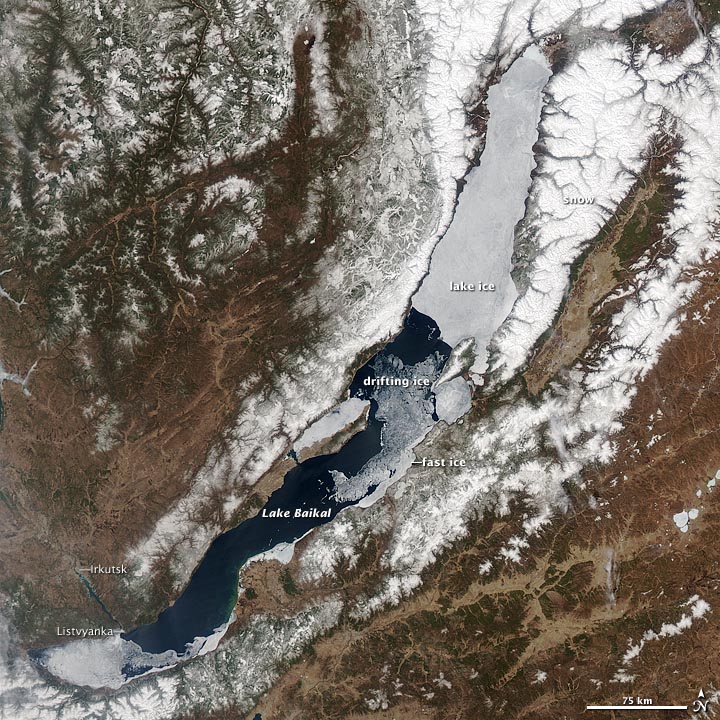
Siberia's Lake Baikal Seen Mid-Melt

During the winter months, Russia's Lake Baikal is usually completely covered by a thick layer of ice — not a surprise given its location in Siberia. Come spring, the long, slow melt begins.
Patches of open water usually appear in the southern part of the lake in early May and move progressively northward. But it isn't usually until late June that the last remnants of the ice have disappeared from the northern reaches of the lake.
NASA's Aqua satellite snapped a picture of the melt in progress. Ice remains throughout the northern portion of the lake, but drifting ice and large patches of open water are visible throughout the southern part. (Ice often lasts longer in the extreme southeastern part of Lake Baikal because that area is shallow.)
The image also shows fast ice along the coasts. Fast ice is anchored, or fastened, to the shore and does not move with the winds or currents. It usually persists longer than ice that forms in the middle of the lake over deeper water.
People living along the lake have long kept track of the freezing and break-up each year. One of the best records comes from a monitoring station at Listvyanka, a village on the southeastern coast — records of ice formation and melting that date back to 1869.
Measurements from Listvyanka reveal some interesting trends related to the timing of ice break-up; most notably that it is occurring earlier now than in the past. In the 1870s, thawing began around May 10; today, it often begins in late April. A study by a Swiss researcher calculated that the thawing date had moved by half a day per decade between 1869 and 1999.
The most rapid change (about 3 days earlier per decade) occurred between 1869 and 1920. Since 1920, the date of ice breakup has remained fairly constant at Listvynaka. Ice formation, however, has occurred later in the winter, so the overall ice cover doesn't last as long as it once did.
Sign up for the Live Science daily newsletter now
Get the world’s most fascinating discoveries delivered straight to your inbox.
To get a broader view of the entire lake, researchers used satellites to produce records of thawing between 1992 and 2004.
The study, led by Alexei Kouraev, a scientist based in St. Petersburg, has shown that over the central and northern part of the lake, ice has been forming later, breaking up later, and lasting longer overall since 1992. (For the southern part of Lake Baikal, the satellites shows the timing of the breakup has been fairly constant but that ice is forming later in the winter, which is consistent with the Listvyanka record.)
What's behind the change must still be determined: Air temperatures influence ice formation, and Siberian winters have been getting colder lately thanks to a climate pattern called the Arctic Oscillation. But wind patterns, lake currents, clouds, snowfall amount, and the volume of river water discharged into the lake.











